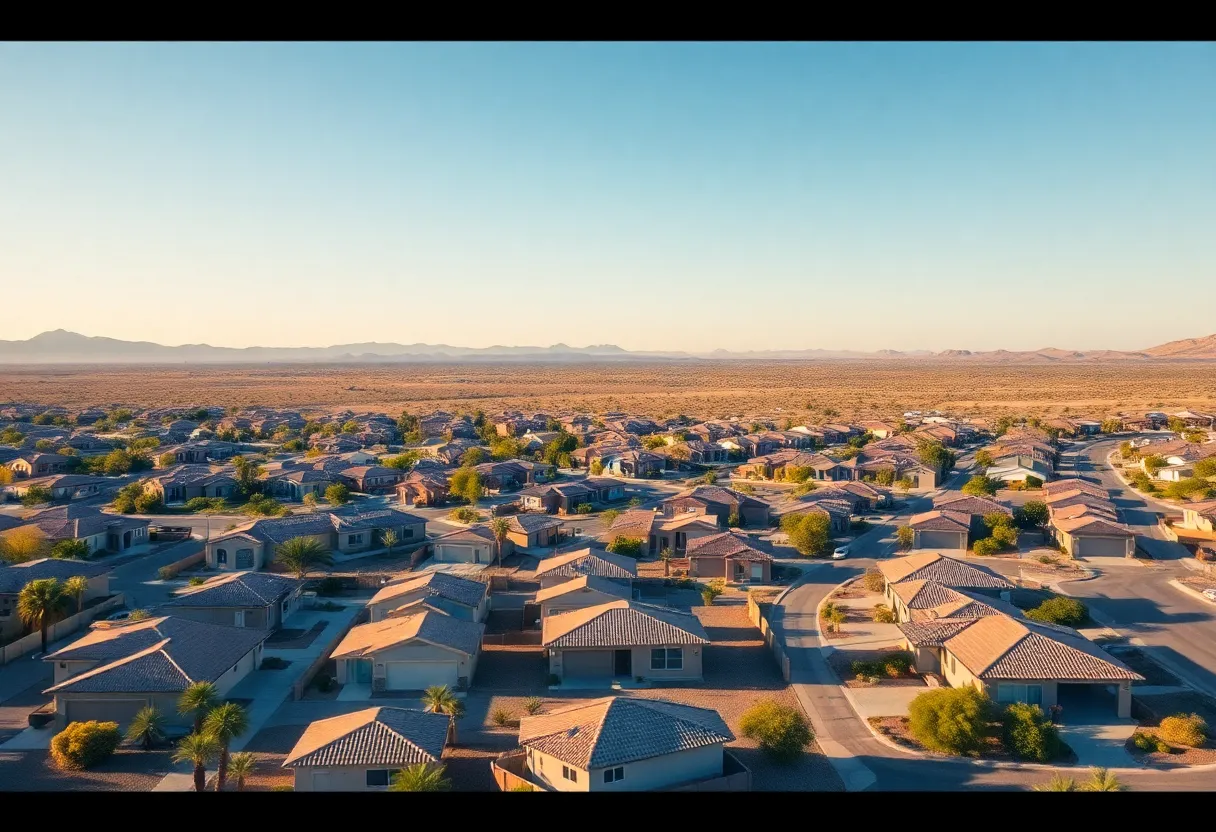News Summary
The Phoenix housing market has seen a surge in inventory, with around 30,000 homes listed for sale as of March, the highest since 2016. Real estate experts anticipate changes in market dynamics as sellers respond to the situation, leading to declining median home prices in Maricopa and Pinal Counties. Although buyers have bargaining opportunities, high mortgage interest rates present challenges, particularly for younger demographics. The market is evolving, and many cash sales are driven by the Baby Boomer generation, setting the stage for future trends.
Phoenix Housing Market Reaches Record Inventory Levels
The state of Arizona is witnessing an unprecedented surge in housing inventory, with the number of homes on the market soaring to levels not seen in nearly a decade. As of March, approximately 30,000 homes are currently listed for sale across the state, marking the highest inventory levels since November 2016. In Metro Phoenix alone, more than 22,000 homes, condos, and apartments are available, reflecting a significant shift in the housing landscape.
Real estate experts predict a potential “mass sell-off” as sellers respond to the changing market dynamics. However, they have ruled out any immediate doomsday scenarios, encouraging buyers to remain optimistic. Despite the uptick in listings, the Arizona Association of Realtors points out that the market still faces a shortage of adequate homes for buyers, indicating a complex environment.
Median Home Prices See Declines
Along with increased inventory, median home prices in the area have begun to decline. In Maricopa County, the median price dropped to $534,900 in March, falling from around $563,000 in May 2023. Similarly, in Pinal County, the median price decreased to $400,000 from $411,000 a year prior. This decline in prices may be advantageous for buyers, particularly as homes remain on the market for an average of 52 days, consistent with data from last year.
Market Dynamics and Buyer Opportunities
The housing market is experiencing a transformation due to several factors. Seasonal trends are contributing to the uptick in inventory as many “snowbirds” sell their properties during this time. Moreover, international investors are retreating partly due to uncertainties in the U.S. economy. Even with ample inventory, insiders in the real estate industry emphasize that a considerable portion of homes is being purchased with cash, primarily by the Baby Boomer generation, making up 51% of current home buyers.
As buyers enter this environment, they have opportunities to negotiate with sellers on aspects like closing costs, which can ease the financial burdens often associated with purchasing a home. However, sellers may need to adjust their expectations regarding home prices to facilitate quicker sales, as many are hesitant due to worries about potential recessions and the risk of losing equity.
Impact of Interest Rates and Market Predictions
Compounding the situation, nearly 7% mortgage interest rates present challenges for prospective buyers, particularly those from Millennial and Gen-Z demographics. This issue may hinder their ability to transition into homeownership, even with favorable negotiation opportunities. Experts caution about overly relying on online predictions regarding market behavior, recalling that previous forecasts had inaccurately anticipated a crash in the Arizona housing market.
Construction Trends and Future Outlook
Supporting the context of rising inventory, the number of home construction permits issued for single-family homes in the Valley has decreased by 15% from the previous year. This may create longer-term implications for supply, even as the current climate favors buyers. Furthermore, the Federal Reserve is anticipated to discuss possible interest rate reductions in upcoming meetings, which could further influence the housing market.
In terms of rental housing, a notable reduction in apartment sizes has also been observed in the Valley over the past decade, with an average decrease of 64 square feet. Cities like Glendale and Tempe have reported average losses of 112 and 135 square feet, respectively, giving insights into changing living trends in the area.
Overall, the Phoenix housing market is evolving, presenting both unique opportunities and challenges for buyers and sellers. As inventory levels rise, the implications for pricing and market dynamics will continue to unfold in a landscape driven by numerous economic and social factors.
Deeper Dive: News & Info About This Topic
- Newsweek: Phoenix Housing Market Faces Mass Sell-Off
- Wikipedia: Arizona
- ABC15: Phoenix Housing Market Softens
- Google Search: Phoenix Housing Market 2025
- 12News: Arizona Housing Market Has Ton of Inventory
- Google Scholar: Phoenix Real Estate Market
- AZ Big Media: The Hottest Housing Markets
- Encyclopedia Britannica: Real Estate
- KTAR: Phoenix Housing Market Today
- Google News: Phoenix Arizona Housing Market

Author: STAFF HERE PHOENIX WRITER
The PHOENIX STAFF WRITER represents the experienced team at HEREPhoenix.com, your go-to source for actionable local news and information in Phoenix, Maricopa County, and beyond. Specializing in "news you can use," we cover essential topics like product reviews for personal and business needs, local business directories, politics, real estate trends, neighborhood insights, and state news affecting the area—with deep expertise drawn from years of dedicated reporting and strong community input, including local press releases and business updates. We deliver top reporting on high-value events such as the Waste Management Phoenix Open, Cactus League Spring Training, and Arizona State Fair. Our coverage extends to key organizations like the Greater Phoenix Chamber of Commerce and Visit Phoenix, plus leading businesses in technology and healthcare that power the local economy such as Intel and Banner Health. As part of the broader HERE network, including HERETucson.com, we provide comprehensive, credible insights into Arizona's dynamic landscape.





